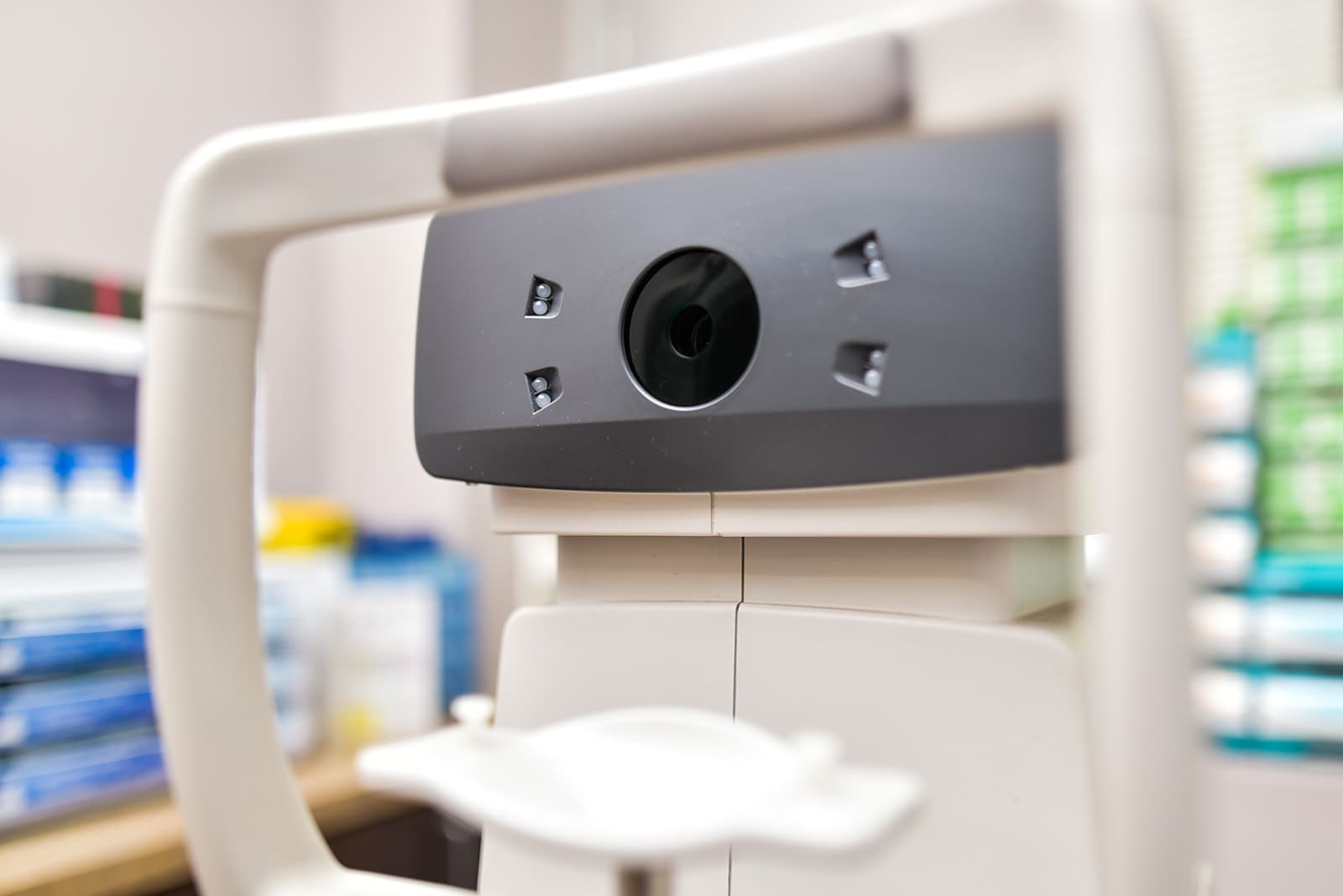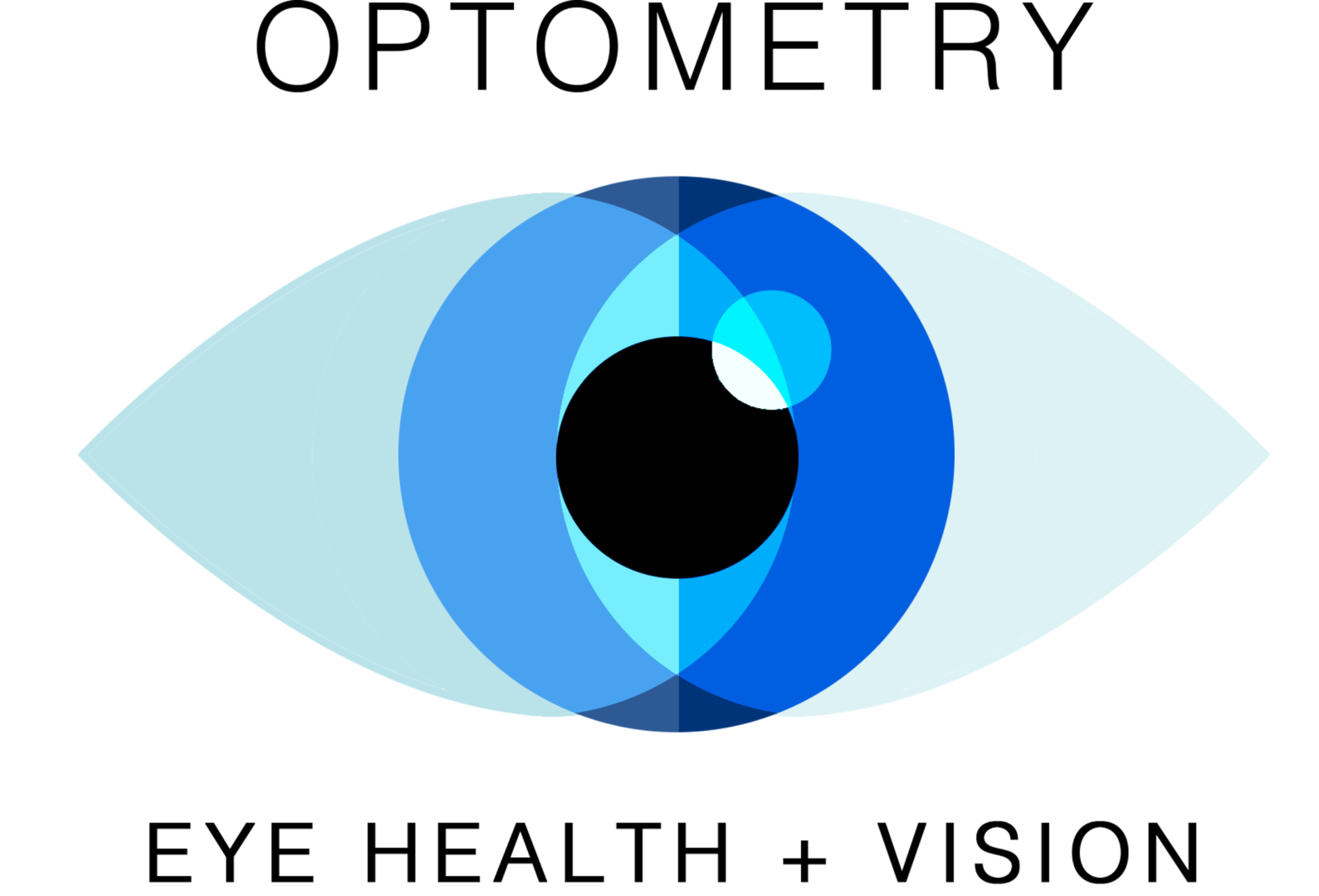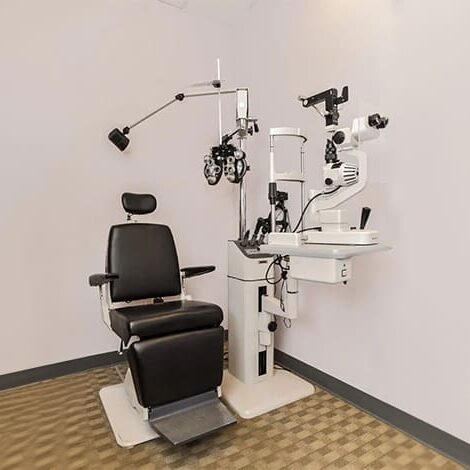
Comprehensive Eye Examinations
Our doctors perform comprehensive eye examinations and check for possible eye diseases and conditions. Upon completion of your examination, we properly prescribe appropriate treatment, whether it requires glasses, contact lenses, medication, or appropriate referrals as needed. To maintain optimal health for your eyes, it is recommended to have an annual eye examination.
Specialty Contact Lenses
Specialty contact lenses are highly customized lenses for corneal conditions that cannot be corrected by conventional glasses or soft lenses.
Common corneal conditions that require specialty lenses are keratoconus or post-surgical irregular astigmatism. Severe dry eye can also benefit from specialty scleral contact lenses.
Keratoconus is a progressive condition where the cornea becomes thinner and cone-shaped, causing glare and blur, and sometimes corneal breaks or scarring that may require a corneal transplant.
Standard rigid gas permeable (RGP) lenses are traditionally used in early cases of keratoconus or minimal irregular astigmatism. The rigid lens creates a new smooth spherical surface for light rays to refract accurately for clear vision. However, RGPs can move excessively and cause discomfort, and switching to a large-diameter scleral lens may improve comfort.
Scleral lenses are designed to vault over the sensitive cornea and rest on the white part of the eyes, called the sclera. These lenses are highly customized and comfortably fit with very minimal movement by vaulting over the cornea. They are filled with a tear reservoir to create the optimal smooth refractive surface for clear vision. The tear fluid reservoir also provides comfort for people with severely dry eyes who cannot tolerate conventional contact lenses.
Hybrid lenses exist for mild and moderate cases of keratoconus, combining the clarity of RGP lenses surrounded by the comfort of a soft lens “skirt”.
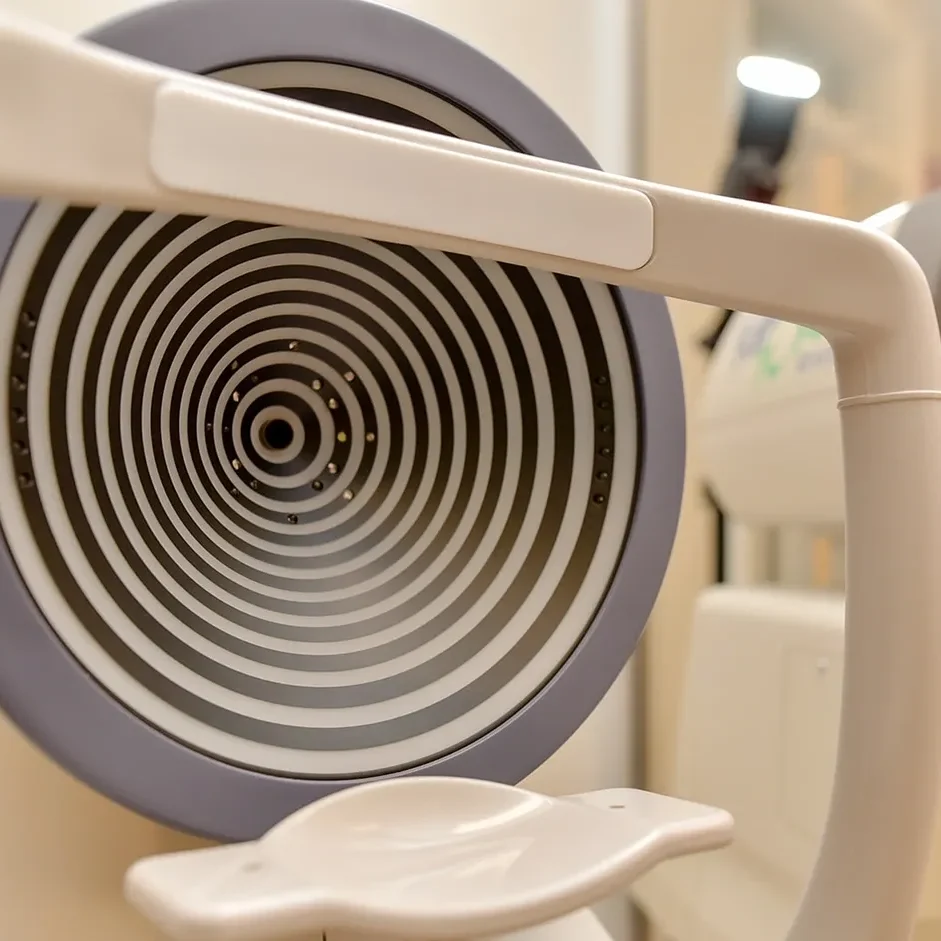
Myopia Control
Myopia is becoming an epidemic in our children’s generation. Studies show that nearsightedness occurs at a younger age and results in higher refractive errors. While the direct cause of myopia is still unknown, studies show links to extensive near work, lack of sunlight, and family history. Now, with evidence-based support, there are ways to control the progression of myopia.
What is Myopia?
Myopia, or nearsightedness, is a refractive condition where the natural focus point of clear vision is up close, causing distance blur. This is due to a physiologically long eyeball or a strong curvature of the front surface of the eye, causing the light rays to not focus on the retina. Symptoms of myopia are blurred at a distance and can cause squinting and headaches. As the eyeball is long or stretched, it also comes with risks of retinal conditions. Myopia progresses when children age as the eyes naturally grow
Myopia Control Options
It is difficult to answer the parent’s and patients’ questions of “how high will the prescription get?” There is no definite answer, and for myopia, unfortunately, there is no cure. However, the goal of myopia control is to slow down or, ideally, stop it at its current state, in order to aid quality of life and reduce future myopic degenerative pathologies.
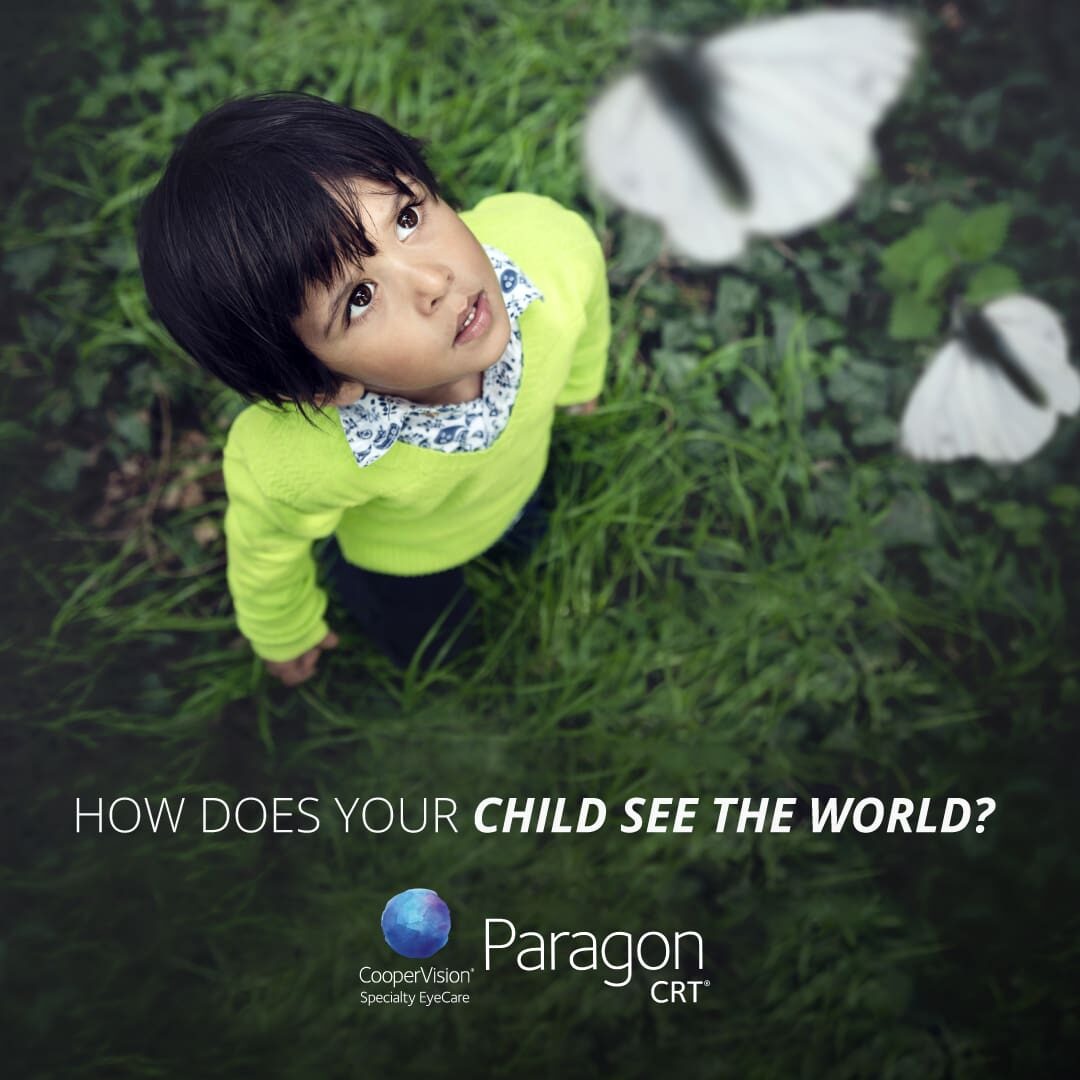
There are four main ways to control the progression of myopia:
Corneal reshaping therapy, i.e., orthokeratology
Ortho-K are FDA-approved customized rigid lenses that are worn at night and gently reshape the cornea and remove in the morning – similar to a dental retainer. As the cornea adapts to the reshaping therapy within a few weeks, the patient’s vision is corrected to see without glasses or contact lenses during the day. The reshaping therapy is nonsurgical and is completely reversible for when the time comes to finish ortho-K.
Multifocal soft contact lenses
Multifocal soft contact lenses are soft lenses specifically designed to reduce hyperopic defocus to inhibit the elongation growth of progressive myopia. These are meant to be worn like normal soft lenses throughout the day.
Atropine pharmacological eyedrops
Low-dose Atropine, 0.01% eyedrops, once daily, has been shown to reduce myopia progression without limited side effects of near vision blur or light sensitivity. While it is an off-label use, it is well studied, and there is significant evidence to show its safety and efficacy by reducing accommodative tone and inhibiting the receptors that cause eye growth.
It does not correct vision, so glasses or contacts must be used for clear vision. It can be used for children for whom other myopia control options may not be suitable, or it can be used in combination with an additive effect to other myopia control therapies.
Bifocal or multifocal progressive eyeglasses
While less effective, if contacts or eye drops are not an option, rather than default to single-vision glasses, there is some reduction of myopia progression through bifocal or progressive lens eyeglasses by decreasing the accommodative demand.
Myopia control is a marathon. We are happy to guide you through the journey for the health and safety of your child’s eyes.
Ask your doctor for options and what might be best for your case.
FAQ
Dry Eye
Dry eye syndrome (DES) is a multifactorial chronic condition when your eyes do not have enough tears or have poor quality tears to keep the eye surface lubricated. Without a healthy tear film, it can result in multiple symptoms with wide variability, causing discomfort and vision problems, and in severe cases, can even damage your corneas.
Symptoms of Dry Eye
- Dryness, itching, or irritation
- Burning or stinging
- Sandy or grittiness, feeling like something is in the eye
- Watery eyes
- Redness
- Blurred vision, glare, haloes

Nearly half of all adults experience dry eye symptoms. Dry eyes can occur due to aging, inflammatory or autoimmune conditions, hormonal changes, medications, environmental or lifestyle factors, and much more. It may also be concurrent with other ocular surface diseases, including blepharitis or meibomian gland dysfunction (MGD).
Typically, dry eye syndrome can be diagnosed through a comprehensive eye exam. However, further testing is available for a complete dry eye workup to determine treatment options.
Treatment options include artificial tears to lubricate the eyes, ointments, prescription eye drops, nutritional therapy, punctual plugs, heated hot compress masks, eyelid scrubs, and much more.
It’s important to realize DES is a chronic disease and needs long-term consistent treatment. Ask our doctors about your dry eye, and we will work with you to create a successful strategy for the comfort and health of your eyes.
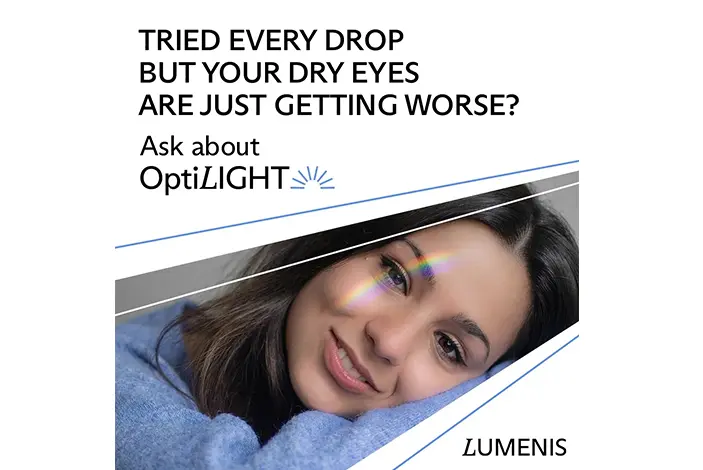
The OptiLight IPL Solution by Lumenis
The OptiLight by Lumenis, or Intense Pulsed Light, is a system that delivers a focused beam of light, NOT laser, to the eye and the delicate skin surrounding, to provide a precise and effective treatment for dry eye, ocular rosacea, hyperpigmentation or acne.
Advanced Treatment
Dry Eye and Meibomian Gland Treatment
Inflammation and bacterial growth around the eyes are treated with the intense pulsed light. By heating the meibomian glands and targeting abnormal blood vessels, it helps to reduce inflammatory agents that are causing your dry eye.
Ocular rosacea is an inflamed eye condition that causes redness, dryness, and irritation of the eyes. It frequently appears in those who have rosacea, or occasionally, is the first indication that you might have facial rosacea.
Reduces fine line wrinkles by stimulating collagen production and targeting pigmentation
Cataracts
A cataract is a cloudiness or opacity in the normally clear crystalline lens within the eye.
Most cataracts are age-related and naturally develop in people over age 50. Cataracts can also develop earlier secondary to other risk factors such as diabetes, steroids, smoking, alcohol, previous eye injury/surgery, and excessive exposure to UV light. Rarely, they can also occur in children from birth, i.e., congenital cataracts.
Depending on its size and location, cataracts will interfere with normal vision. Cataracts are best diagnosed through a comprehensive eye examination with dilation to evaluate the lens.
Treatment of cataracts is based on the level of visual impairment. Early cataracts are monitored and may simply require a change in the eyeglass prescription. However, as the cataract progresses and starts to significantly impact your vision, eventually, a change in prescription is not enough, and surgery may be indicated.
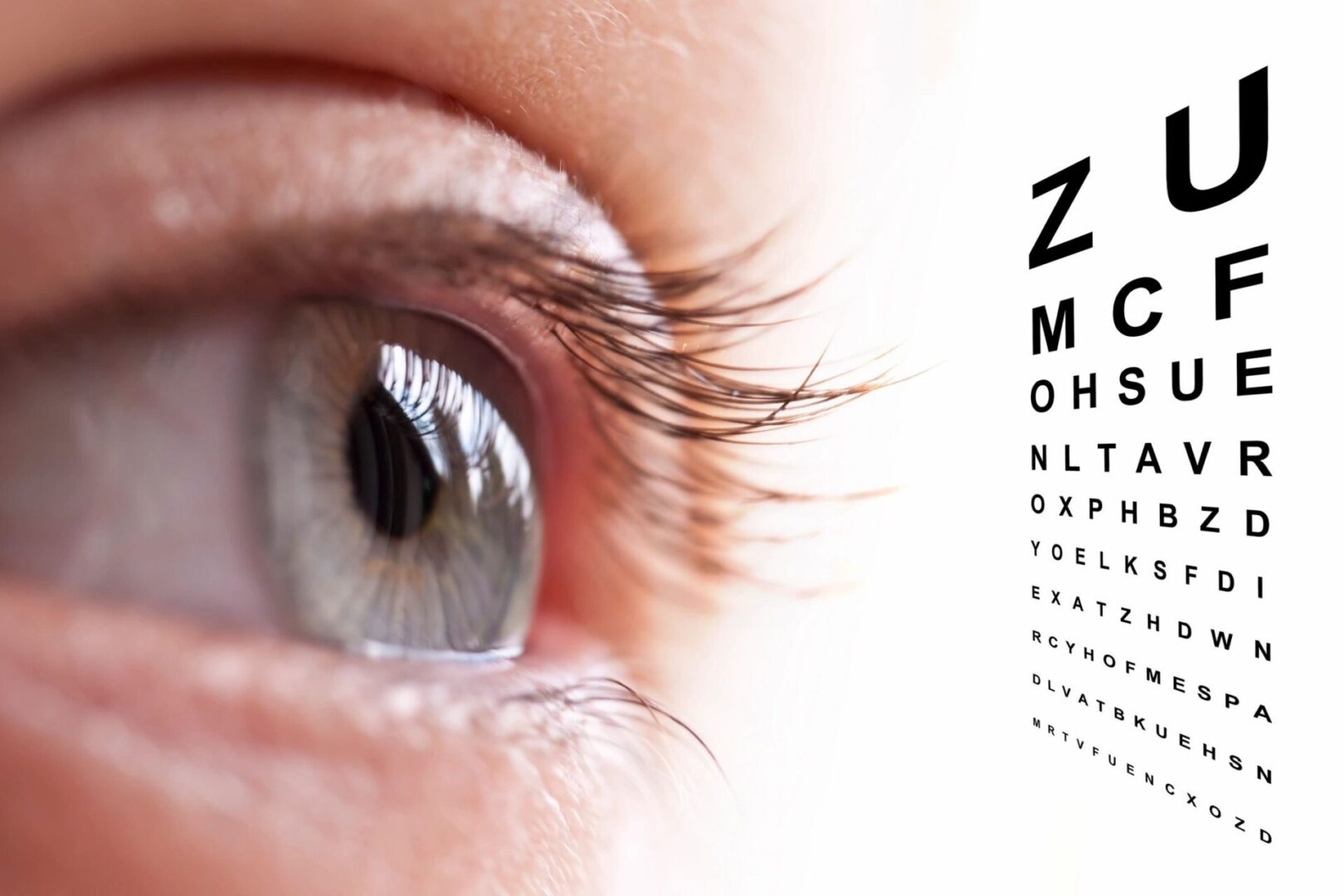
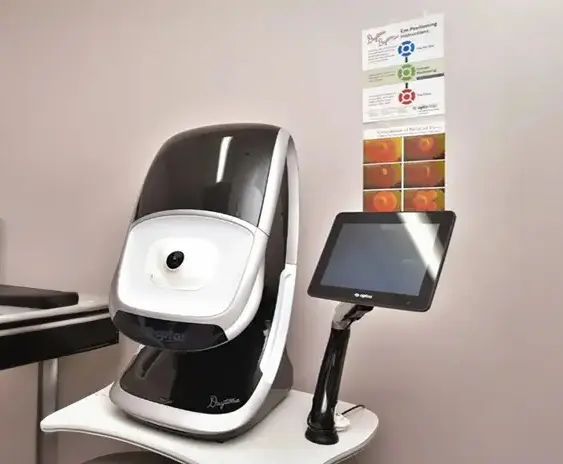
Diabetes
Diabetic retinopathy is the leading cause of vision loss for Americans. Patients with diabetes should have annual diabetic eye exams to monitor for potential changes.
Early to moderate diabetic retinopathy is often asymptomatic; therefore, regular eye examinations with your optometrist are required to monitor for potential interventions. Coordination with your primary care doctor/endocrinologist is highly important.
Age-Related Macular Degeneration
AMD is a retinal condition where the disease affects your central vision retina called the macula, typically sparing the periphery. Early changes may be imperceptible to you but can lead to irreversible blank spots and blindness in severe disease.
There are two types of AMD: Dry and Wet.
Dry AMD makes up 90% of all cases, where retinal deposits called drusen build up and cause dimming and defects in the vision.
Wet AMD is less common, where weak and leaky blood vessels cause bleeding in the retina. This leads to macular scarring and acute vision loss. Treatment for wet AMD typically includes intraocular injections or a laser to reduce the compromised leaky blood vessels.
While there is no way to reverse the changes, regular retinal evaluations are required to monitor for progression. Nutritional changes to diet and supplements have also been shown to reduce the risk of progression in certain cases.
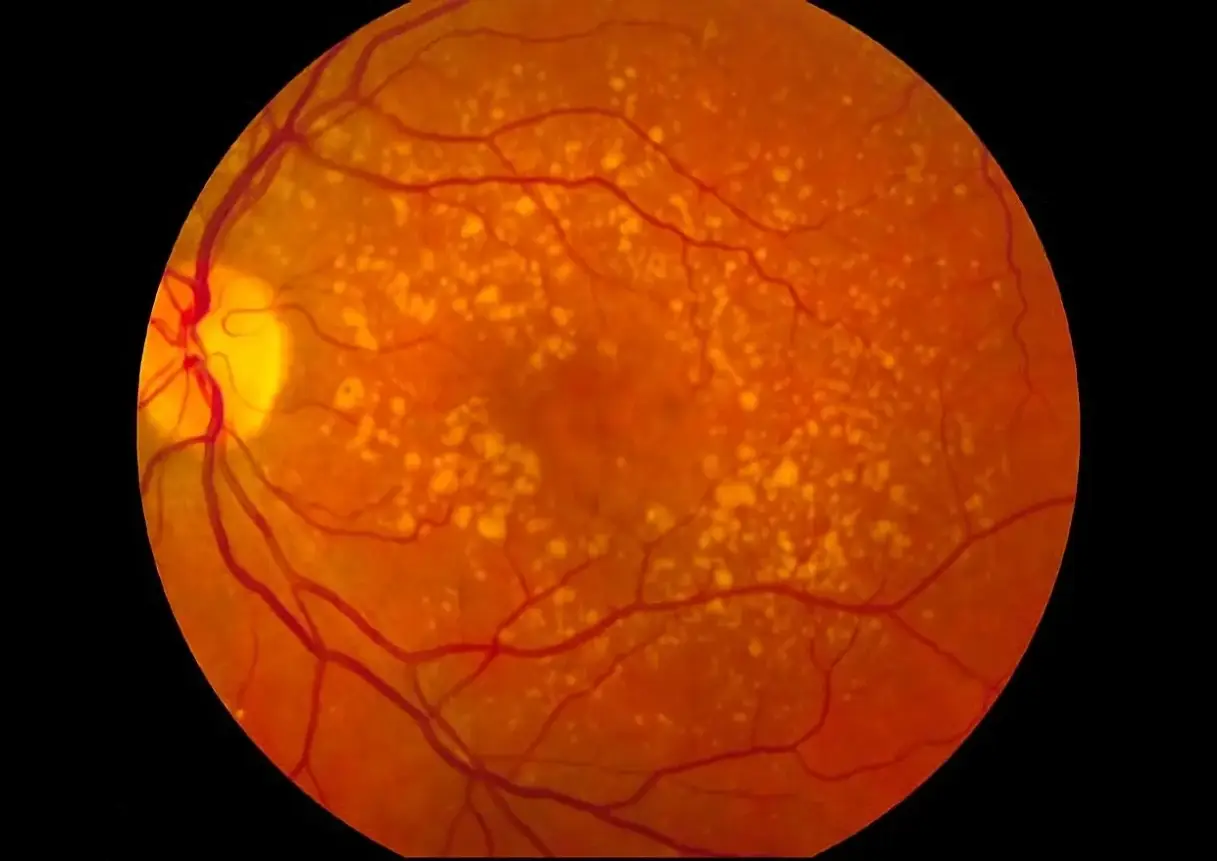

Glaucoma
Glaucoma is a group of eye diseases that cause damage to the optic nerve and cause irreversible vision loss. There are many types of glaucoma, but essentially, all-cause optic nerve damage due to elevated eye pressure or when the optic nerve is vulnerable to the eye pressure. When the optic nerve is damaged, vision loss typically begins from the periphery and can progress to tunnel vision or complete blindness.
There are very few symptoms of glaucoma. Glaucoma is all about change. Baseline and historical measures are very important in following progression. Because it occurs slowly, glaucoma is often called the “silent thief of sight,” and many patients cannot tell their vision is changing until it is too late due to severe disease.
Glaucoma is often picked up on comprehensive eye examinations. Talk with your optometrist about your risk of glaucoma. Your doctor may decide you need a glaucoma workup to fully evaluate your ocular status and regular eye pressure follow-ups. Treatments include conservative measures with topical eye drops, laser procedures, and surgical intervention.
Emergency Eye Care
Corneal Abrasions, flashes & floaters, ocular foreign bodies, pink eyes, etc. We are more than happy to service your urgent eye care needs. Please call our office (410) 461-8606.
Co-Management & Referrals
We co-manage and refer patients for surgery for cataract extraction and laser refractive correction. Our doctors can help ease our patients through some of the biggest decisions when it comes to their eye care. Our doctors are trained optometrists who can refer you appropriately for treatments and surgeries when needed. We have friendly professional relationships with local optometrists and ophthalmologists.
